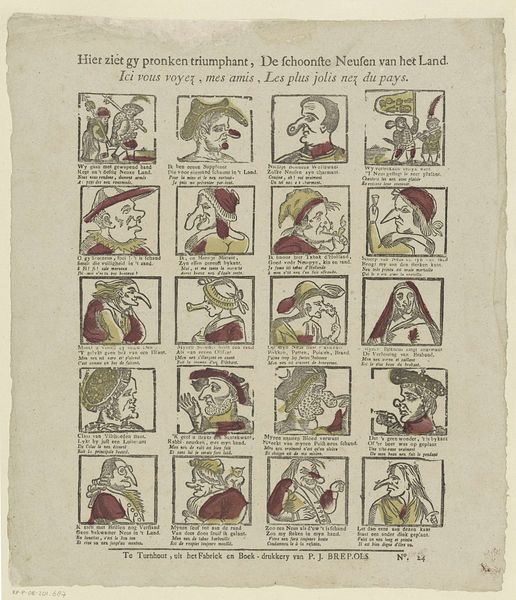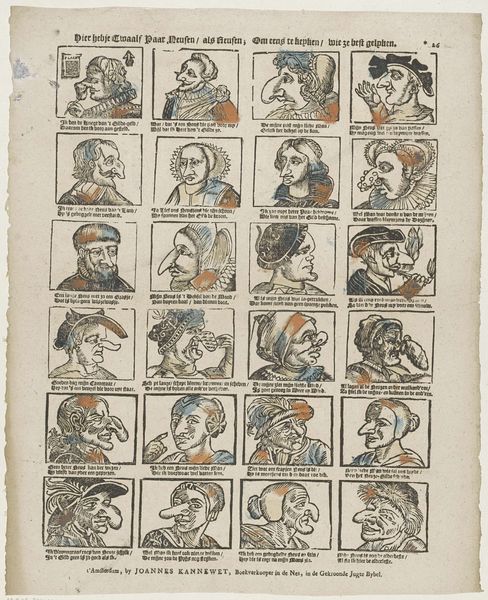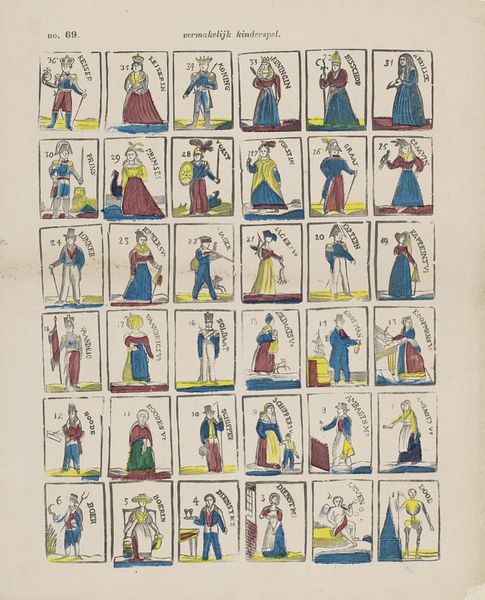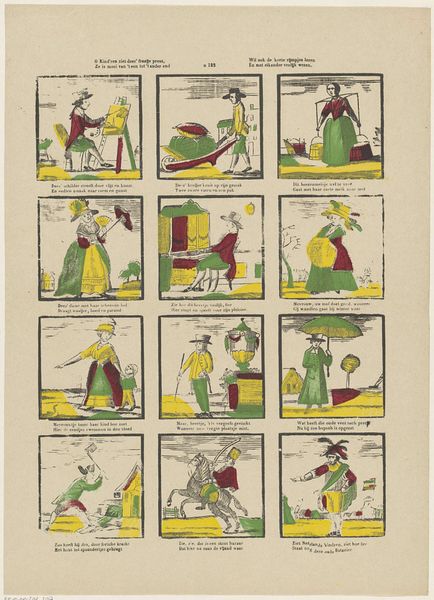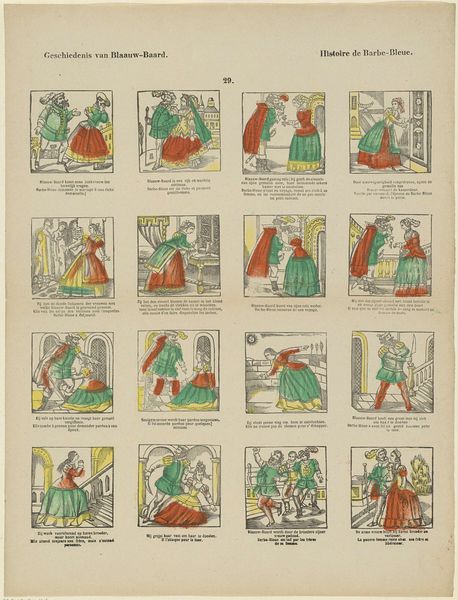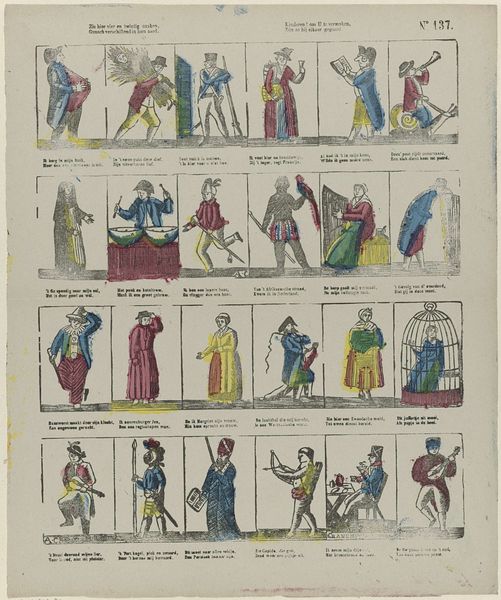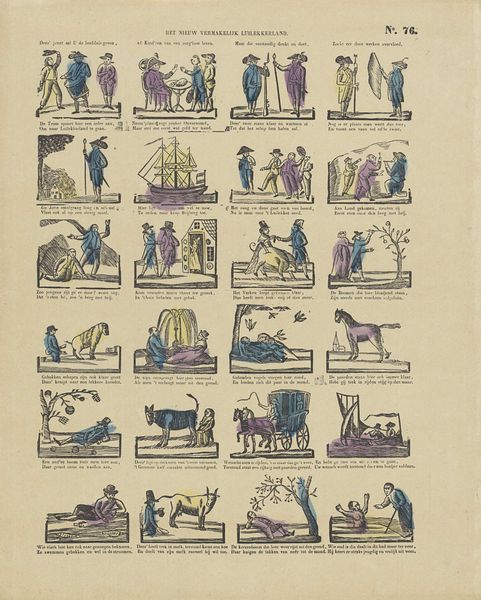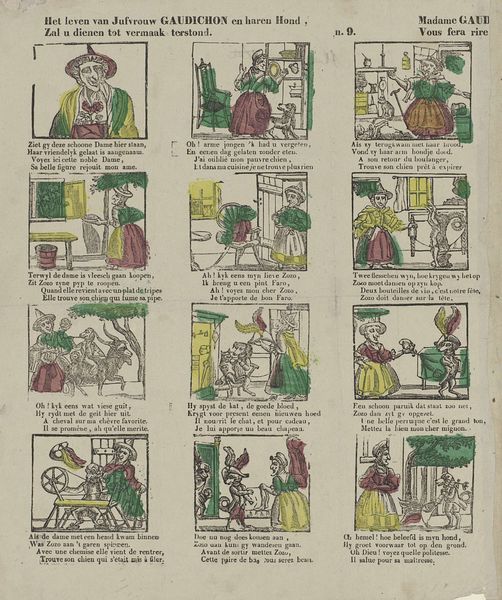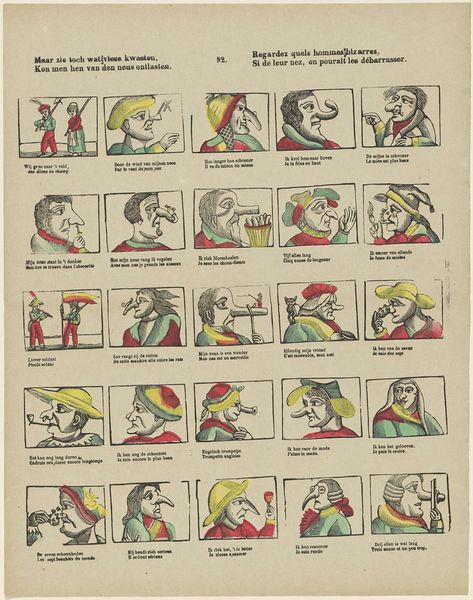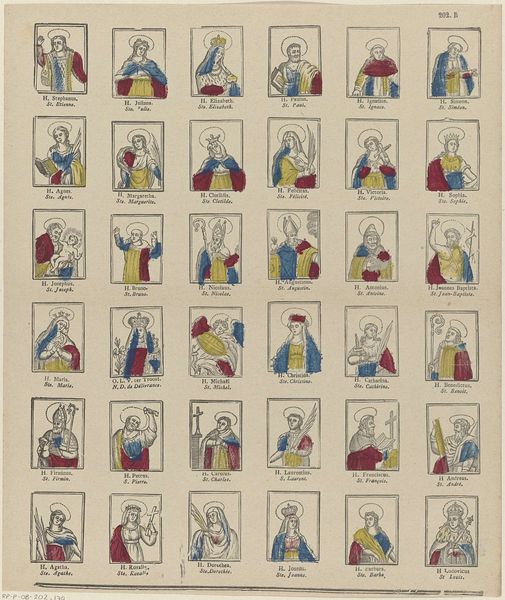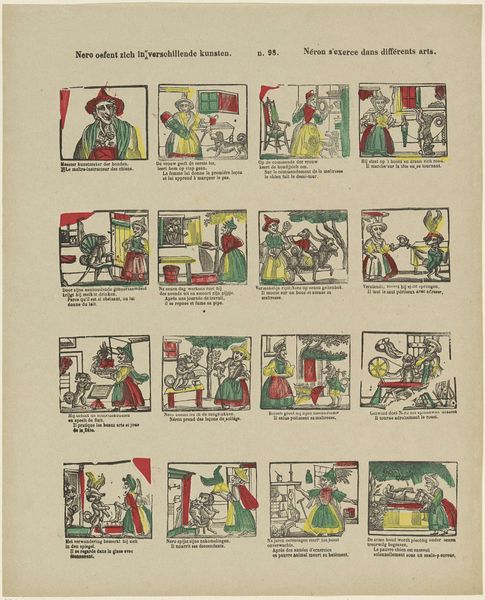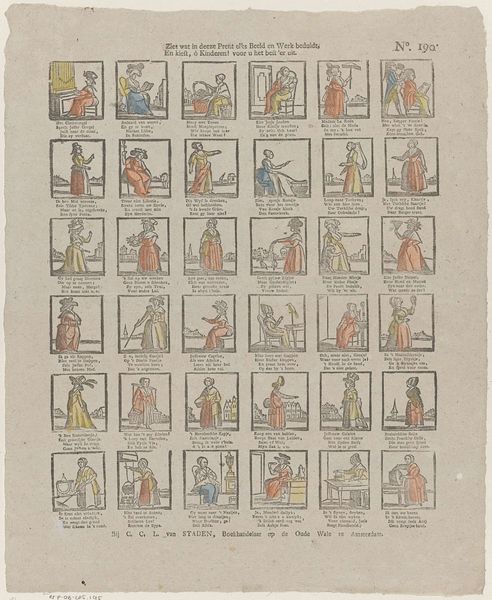
Hier ziet gy pronken in triomphant, de schoonste neuzen van het land. / lei vous voyez, mos anaïs, les plus jolis nez du pays. 1842 - 1856
0:00
0:00
print, etching
#
comic strip sketch
#
toned paper
#
quirky sketch
# print
#
etching
#
caricature
#
sketch book
#
personal sketchbook
#
sketchwork
#
ink drawing experimentation
#
comic
#
sketchbook drawing
#
genre-painting
#
storyboard and sketchbook work
#
sketchbook art
Dimensions: height 397 mm, width 323 mm
Copyright: Rijks Museum: Open Domain
Curator: Let's delve into this etching by P.J. Delhuvenne, created between 1842 and 1856. Titled "Hier ziet gy pronken in triomphant, de schoonste neuzen van het land," it presents a grid of caricatures. The long noses are quite striking, and they seem to represent something beyond mere physical traits. I’m curious, what elements of this piece stand out to you? Editor: I’m really intrigued by the printmaking process. It’s so detailed, and the characters all have different little stories to tell, judging by their expressions and surroundings. I see it as kind of quirky and strange, but, also, I wonder, what were the working conditions like for Delhuvenne and how does the medium impact the message? Curator: Precisely! Think about the socio-economic context. Etchings were relatively accessible, allowing wider distribution of satirical imagery. The use of print suggests an intention for broad consumption and perhaps commentary on a growing middle class, able to purchase such materials. How do you think the choice of etching, with its linear precision, informs the perception of these caricatures versus, say, a painted portrait? Editor: Well, an etching would allow for multiples, right? So maybe the artist wanted to spread his… political ideas… more widely. If it was a painting, only one person could own it. And the details almost feel mass produced, if that makes sense. Each nose has a level of… manufactured absurdity, maybe reflecting societal norms? Curator: Excellent. The "manufactured absurdity," as you put it, hints at the mechanization and industrialization emerging at the time. The very act of replicating these images comments on how societal structures might be shaping and standardizing even something as individual as a nose, and then, of course, influencing ideas. How the burgeoning middle class consumed art provides insight on class dynamics. Editor: That’s fascinating! So, it’s not just about the noses being funny; it’s about how the creation and consumption of this print reflect larger societal changes. Thanks. I definitely learned a lot about analyzing art through its production. Curator: Absolutely. By looking at the material conditions and means of production, we uncover deeper social and cultural meanings embedded within the artwork. Focusing on materiality is truly transformative!
Comments
No comments
Be the first to comment and join the conversation on the ultimate creative platform.
